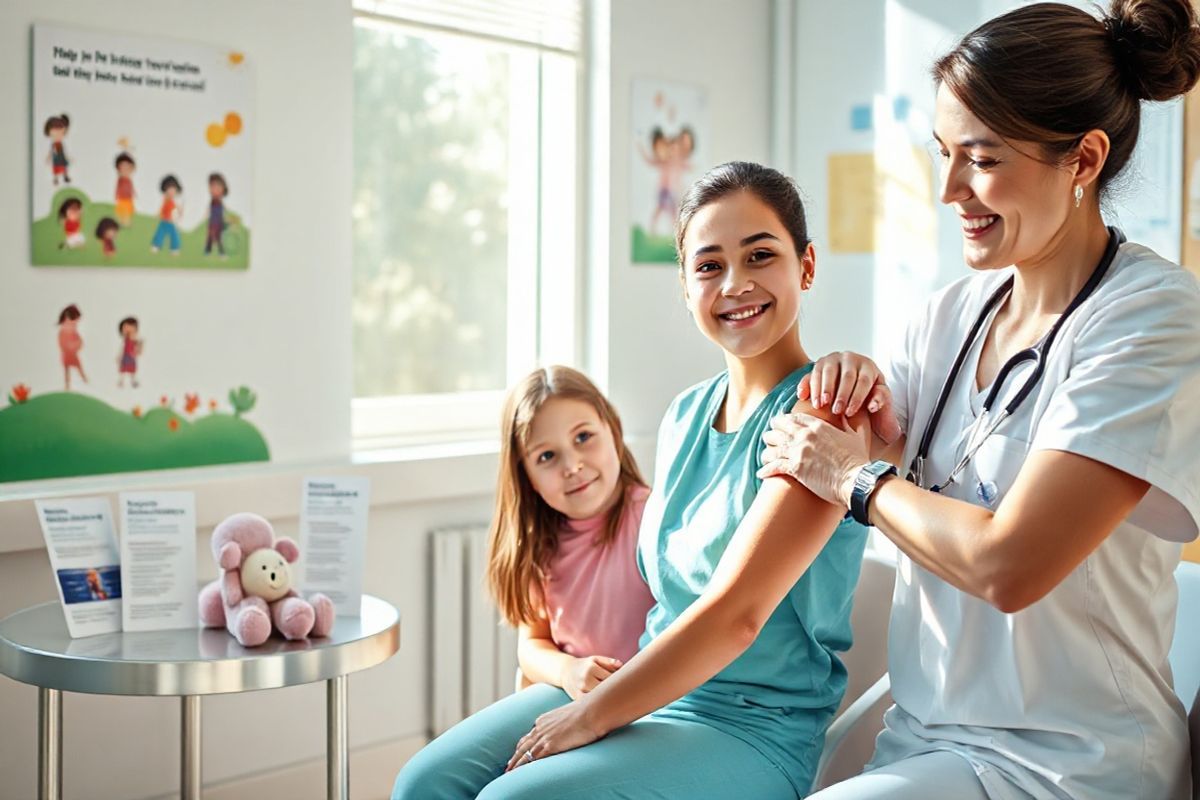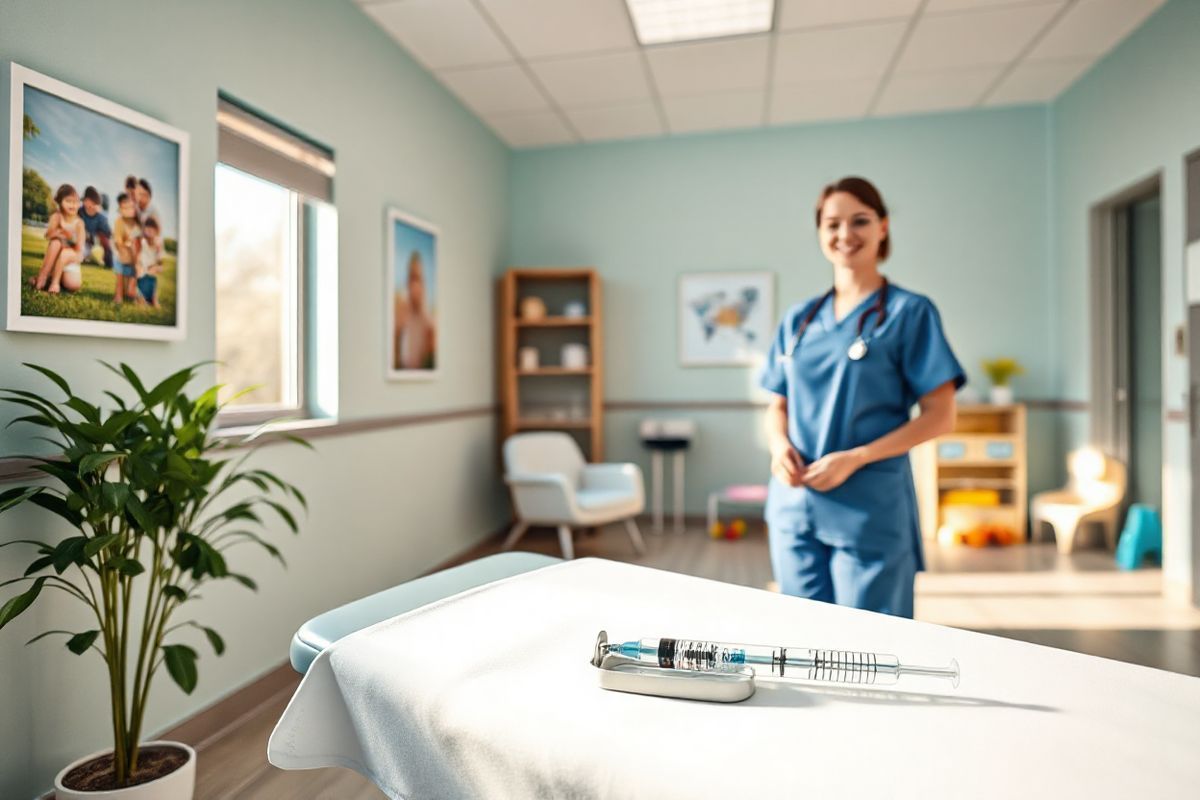Table of Contents
Exploring Gardasil 9: The Key to HPV Protection

gardasil 9, also known as the 9-valent human papillomavirus (hpv) vaccine, is a significant advancement in the prevention of HPV-related diseases. This vaccine protects against nine HPV types, including HPV 6, 11, 16, 18, 31, 33, 45, 52, and 58. These HPV types are responsible for the majority of cervical and other anogenital cancers, as well as oropharyngeal cancers (CDC, 2023). HPV is the most common sexually transmitted infection worldwide, with nearly all sexually active individuals becoming infected at some point in their lives (WHO, 2023).
The primary objective of the HPV vaccine is to prevent the occurrence of HPV infections before individuals become sexually active. The Centers for Disease Control and Prevention (CDC) recommends routine vaccination at ages 11 or 12, although it can be administered as early as age 9 and up to age 45 (CDC, 2023). The vaccine is administered in two doses for those aged 9 to 14 years, with the second dose given 6 to 12 months after the first. For those aged 15 to 26, three doses are required over a six-month period.
By vaccinating against HPV, individuals significantly reduce their risk of developing various cancers associated with the virus, making Gardasil 9 a crucial tool in cancer prevention strategies. Studies have shown that vaccination before the age of 17 can reduce the risk of cervical cancer by 88% compared to those who are unvaccinated (UF Health, 2023).
Common Side Effects of Gardasil 9: What to Expect

While Gardasil 9 is generally safe, like any medical intervention, it can cause side effects. The most common side effects include:
- Soreness at the injection site
- Redness or swelling at the injection site
- Headaches
- Nausea
- Fatigue
- Mild fever
In rare cases, individuals may experience dizziness or fainting after the injection. To mitigate the risk of fainting, it is advised that patients remain seated or lie down for 15 minutes after receiving the vaccine (CDC, 2023).
Other less common side effects can include severe pain in the shoulder or difficulty moving the arm where the shot was given, which can completely recover without medical intervention (UF Health, 2023). It is important to note that the benefits of vaccination—namely, the prevention of cancer—far outweigh the risks associated with mild side effects.
Managing Side Effects: Tips for a Smooth Vaccination Experience
To ensure a smooth vaccination experience and manage potential side effects effectively, the following tips can be helpful:
-
Stay Informed: Knowledge about the possible side effects can help prepare individuals for what to expect. Understanding that mild side effects are common can alleviate anxiety.
-
Hydration and Nutrition: Drinking plenty of water and having a light meal before the appointment can help reduce feelings of dizziness and faintness.
-
Rest: Ensuring adequate rest before and after vaccination can help the body recover and respond better to the vaccine.
-
Post-Vaccination Observations: After receiving the vaccine, individuals should sit for about 15 minutes in the healthcare provider’s office to monitor for any immediate reactions.
-
Communicate with Healthcare Providers: If side effects occur, it’s important to report them to healthcare providers, who can offer guidance and reassurance.
-
Pain Management: Over-the-counter pain relievers such as ibuprofen or acetaminophen can help manage soreness or mild fever after vaccination.
By following these strategies, individuals can better navigate the vaccination process and manage any side effects that may arise.
The Importance of the HPV Vaccine in Cancer Prevention
The HPV vaccine plays a vital role in cancer prevention, particularly cervical cancer, which is the fourth most common cancer among women worldwide. Approximately 94% of cervical cancer deaths occur in low- and middle-income countries, highlighting the critical need for effective vaccination programs (WHO, 2023).
Vaccination not only protects against cervical cancer but also other cancers associated with HPV, including cancers of the vagina, vulva, penis, anus, and oropharynx. In the U.S., about 34,000 cases of cancer are caused by HPV each year (CDC, 2023). The vaccine’s effectiveness in reducing HPV-related diseases has been well-documented, making it a cornerstone of public health strategies aimed at decreasing cancer incidence.
Moreover, the HPV vaccination has been linked to a significant decline in the prevalence of HPV infections and related diseases. A study involving over 60 million individuals revealed that HPV infections decreased by 83%, genital warts decreased by 67%, and cervical pre-cancers decreased by 51% after the introduction of the vaccine (UF Health, 2023).
Frequently Asked Questions About Gardasil 9 and HPV Vaccination
1. Who should receive the Gardasil 9 vaccine?
The Gardasil 9 vaccine is recommended for preteens aged 11 to 12 years but can be given as early as age 9 and up to age 45 (CDC, 2023).
2. Are there any contraindications for the HPV vaccine?
Gardasil 9 is not recommended for individuals who have had a severe allergic reaction to a previous dose of the vaccine or any vaccine components. Additionally, it should not be given during pregnancy (CDC, 2023).
3. Can vaccinated individuals still get HPV?
While Gardasil 9 provides protection against the most common and high-risk HPV types, it does not treat existing infections. Therefore, individuals who are already infected may still be vulnerable to other strains of HPV not covered by the vaccine (UF Health, 2023).
4. How long does the protection from the vaccine last?
Studies indicate that the protection conferred by the HPV vaccine is long-lasting, with no evidence suggesting a decrease in effectiveness over time (CDC, 2023).
5. Is the HPV vaccine necessary for individuals who are already sexually active?
Yes, even sexually active individuals can benefit from vaccination. The vaccine protects against strains of HPV that they may not have been exposed to yet (CDC, 2023).
References
- CDC. (2023). HPV Vaccination. Retrieved from https://www.cdc.gov/hpv/vaccines/index.html
- UF Health. (2023). HPV Vaccine. Retrieved from https://ufhealth.org/conditions-and-treatments/hpv-vaccine
- WHO. (2023). Human Papillomavirus (HPV) Vaccine - PAHO/WHO. Retrieved from https://www.paho.org/en/human-papillomavirus-hpv-vaccine










